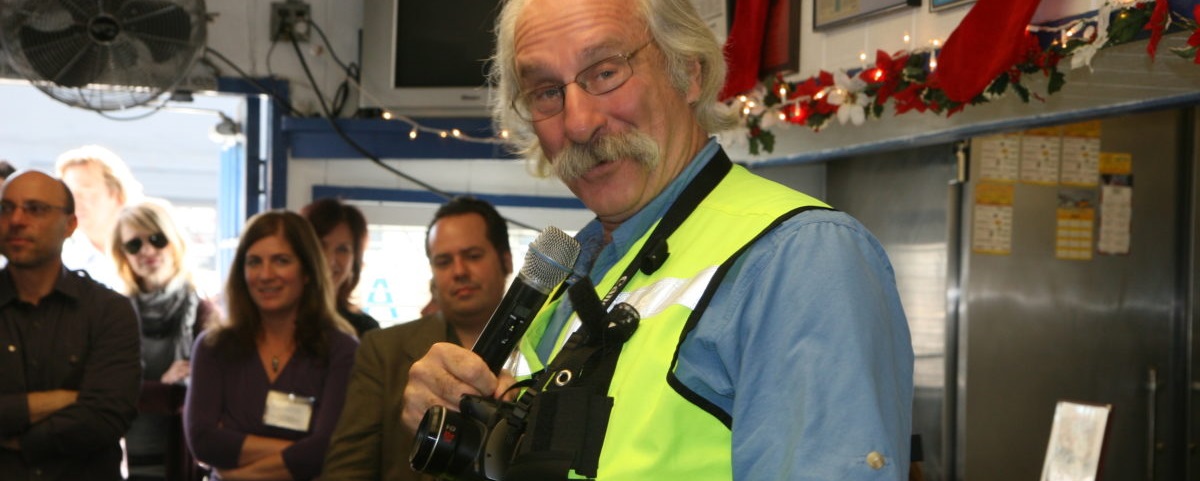by Mark McDermott, Easy Reader News
A workshop Monday night featuring two of the most prominent city designers in the United States will explore how the three Beach Cities could be better built to foster a more vital sense of community.
Dan Burden, the Blue Zones Director of Inspiration and Innovation, was named by Time magazine as one of the six most important civic innovators in the world. Paul Zykofsky, associate director of the Local Government Commission Team, is the author of “Building Livable Communities” and co-author (with Burden) of the American Planning Association’s “walkability” section of its urban design standards.
Monday night’s Community Design Workshop, co-hosted by the Beach Cities Health District and the cities of Manhattan Beach, Redondo Beach, and Hermosa Beach, is intended to kickstart a community discussion about ways to change the local built environment to encourage better walkability, bikeability, and civic vitality.
Coming on the heels of the controversy over “road diets” that impacted local commuters heading north on Vista Del Mar, the topic of improving the area’s non-auto transit uses is a sensitive one. But Lauren Nakano, BCHD’s director of the Blue Zone Project, said what occurred in that instance points to exactly why such public engagement is important.
“We’ve talked to the three cities since Vista Del Mar and there are a lot of lessons about how to have a more involved and community-engaged process for their built environment projects,” Nakano said. “So with these workshops, we are hoping we can create a space for residents to have an experience designing a street — just a kind of ‘Any Town USA’ street — that encourages various perspectives from people to come out.”
In an interview a few years ago, Burden emphasized the importance of a community coming to a shared vision in order to enact policy that creates more vibrant public places. He recalled his experience in Lancaster, a small town in California’s Antelope Valley. He was invited to speak at the City Council there and before the meeting fell in love with the town’s vibrant downtown, which had been converted from five lanes to two and from a 50 mph to a 15 mph speed limit. The city had subsequently attracted $900 million in investment. Burden was supposed to speak on another topic altogether, but as he walked into the council chambers he realized everybody was looking at him.
“I said, ‘What’s going on here?’ I’d never been to that town in my life,” Burden recalled. “And I traced it back — they had gone to a meeting in Monterey to learn about main streets and they heard the presentation I did, and they said, ‘We can do this.’ They went off to a microbrewery, dreamed up the idea, came up with the concept, and hired a great architectural team to come in and do it. And they built it and now they are just attracting one business after another and all this money — developers want certainty, they want to know there is a place they can build on. They don’t want some endless mile of ugly stuff. They want a real place. And that’s what Antelope Valley and Lancaster are offering. It’s fascinating.”
Establishing a policy to build better communities, Burden said, is not just about arriving at a set of diagrams.
“Policy sounds kind of backwater. Like why do we want policy?” he said. “Well, you have to have a vision first. But once you have that vision, if you don’t have a policy you are not going to have that vision [come to fruition]. It won’t work.”
The idea behind the workshop is to generate such visions from the community itself.
“This workshop is very general, not tied to any specific project,” Nakano said. “We want a constructive dialogue around what people value in neighborhoods, and how they can experience and understand different options around designing streets.”
The most dramatic example locally of a changed built environment to better accommodate modes of transportation other than cars is Harbor Drive in Redondo Beach, where the wall between that city and Hermosa was knocked down and a better bike path was built.
“I know from talking to the City of Redondo they’ve seen an uptick in sales in the businesses along Harbor Drive and the pier, but also a pretty significant uptick in bicycle riders,” Nakano said. “So I think that’s a good example of being able to create a project and work with the community and the city to adjust features along that street to make it successful for everybody.”
“I really am convinced once you change policy and have people look differently, at something other than ‘We are trying to move the greatest amount of traffic’ to ‘We want a city where people know one another, where they enjoy life, where they are happy, where they are active,’” Burden said. “Once we declare, from policy, that we are going to have traffic act differently, that we are really going to start building village centers that people can walk down to, bike down to, drive shorter distances to — those policies start to change the whole fabric of the city.”
The “Streets for All Community Design Workshop” is December 4, 2017, 6 – 7:30 p.m., at the Joslyn Community Center 1601 N. Valley Drive, Manhattan Beach.
To view full article on Easy Reader News, click here.




